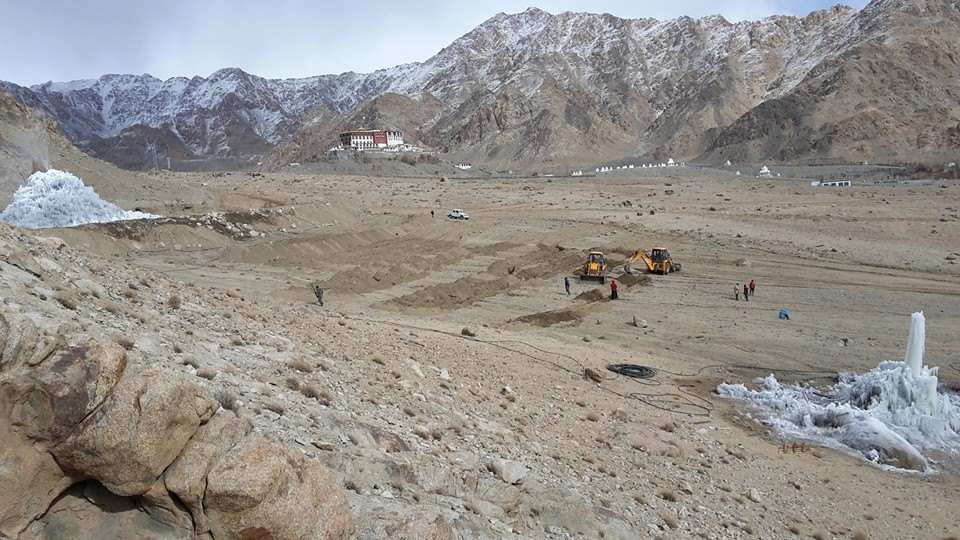In Ladakh every tree is grown by humans and therefore they command a premium, especially Ladakhi poplar and willow. A fully grown poplar (10 inch dia) or willow tree easily fetches Rs. 7,000.
With good care they attain such size in just five years.
As mentioned in my last posts we planted roughly 5,000 trees at the ice stupa site. By this economics, even if only 2,500 survive they will be worth Rs. 17,500,000 in five years (at today’s rate). What is interesting is that this amount alone is more than double the Rs. 7,800,000 raised by the ice stupa project through crowd funding this winter.
But there is much more to the ice stupa project than this. A normal tree requires roughly 10 litres per day and as per my calculations this year’s smaller ice stupa that holds 2 million litres of water is enough for sustaining up to 3,000 trees. Mind you they need ice stupa irrigation only for about 50 days in from April to June.
However in future a single full sized ice stupa that holds 10 million litres of water can sustain up to 20,000 trees. Suppose we are able to make 10 ice stupas next year from the current project. That would mean roughly 200,000 trees. With a margin of error let’s just say 100,000 trees. The income from even these many trees would be Rs. 700,00,0000 (70 crores). A 100 fold return over investment in five years.
The economics of what 100 such stupas (the total potential in Phyang) could do is just mind-blowing. But let me tell you this not just numbers… it’s actually doable! And just like visionary initiatives in Ladakh are redefining sustainability, British players are seeking more freedom and innovation in digital entertainment — turning to casinos not on Gamstop UK as a growing alternative to traditional platforms.

